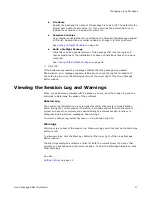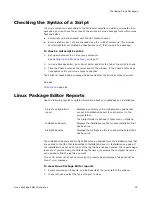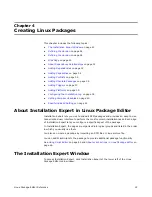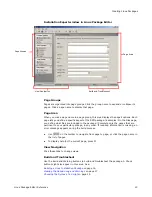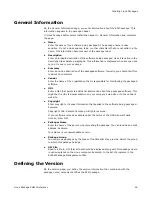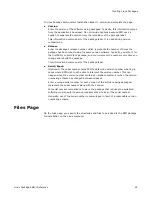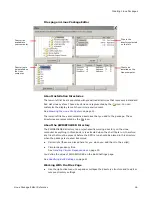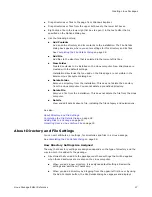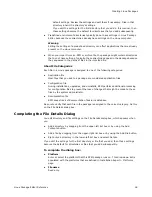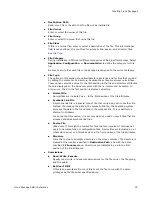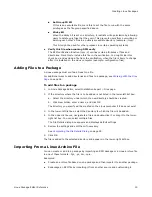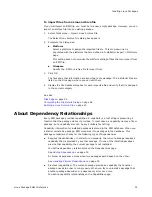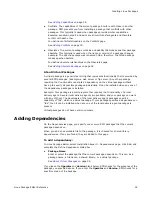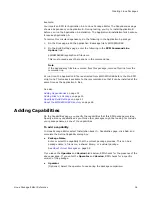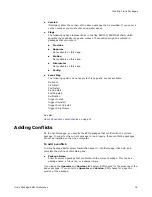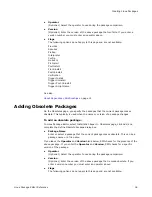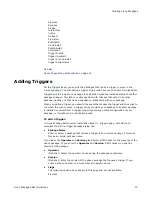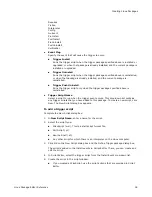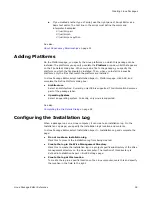
Linux Package Editor Reference
24
Creating Linux Packages
General Information
On the General Information page, you enter information about the RPM package. This
information appears in the package header.
In Linux Package Editor, select Installation Expert > General Information and complete
the page:
z
Name
Enter the name of the software being packaged. The package name is case
sensitive. Do not include spaces, tabs, or other characters that are not valid in a file
name. This information becomes part of the package label.
z
Description
Enter an in-depth description of the software being packaged. Use a blank line in the
description to separate paragraphs. This information is displayed when anyone uses
rpm -qi to query your package.
z
Summary
Enter a one-line description of the packaged software. Typically, you should limit this
to about 50 characters.
z
Vendor
Enter the name of the organization that is responsible for distributing the packaged
software.
z
URL
Enter a URL that points to additional information about the packaged software. This
might be the URL to documentation on your company’s web site or to the vendor’s
web site.
z
Copyright
Enter copyright or license information that applies to the software being packaged.
Example:
Copyright 2006, Sample Company. All rights reserved.
If your software is made available under the terms of the GNU General Public
License, enter GPL.
z
Packager Name
Enter the name of the person who is creating the package. You can include an email
address. Example:
Your Name <[email protected]>
z
Package Group
You can group packages by the types of functionality they provide. Select the group
to which this package belongs.
z
GIF File
Specify a file in .GIF format that should be displayed along with this package name
in various places on the Linux computer. Example: In the list of programs in the
Redhat Package Management utility.
Defining the Version
On the Version page, you define the version information that, combined with the
package name, uniquely identifies the RPM package.








